Looking for a way to boost employee productivity?
We hear you.
Increasing employee productivity is a win-win situation. It keeps employees happy, helps your business grow, and allows you to provide a better service to your customers.
But it’s not always easy.
On the road to a productive workflow, there are obstacles to overcome. If you’re reading this article, chances are you’ve already experienced some.
But don’t worry. You’ve come to the right place for answers.
In this article, we’re taking a look at what employee productivity is, why it’s important, and the challenges you might face.
More importantly, we’ve also outlined 6 ways you can boost employee low productivity.
What is meant by employee productivity?
Employee productivity is the measure of output during a set period of time.
For example, let’s say you need to create some new proposals for prospective clients.
During the working week, you create 5 new proposals. A colleague of yours creates 3 in the same timeframe.
Between you and your colleague, you’ve been more productive.
Why? Because your output was higher. It’s as simple as that.
Why is employee productivity important?
This might seem like an obvious question, but there’s more than one reason employee productivity is important for your business.
Let’s take a look.
- Better results. With a more productive workforce, you have a higher chance of making more sales and growing your business.
- Happier employees. Being productive gives employees a sense of purpose. It motivates them to work towards a larger goal, gives them job satisfaction, and improves overall employee engagement.
Not to mention, research shows that employee satisfaction has a positive effect on workforce productivity.

- Satisfied customers. With higher productivity levels, you can provide a better service to your customers. Not to mention you’ll be producing more products and services overall, so as demand grows, you’re well placed to meet it.
Obstacles that impact employee productivity
Several obstacles can impact worker productivity. We’ve outlined a few of the most common hurdles:
- Employee wellbeing. If your employees are struggling emotionally or physically, this can impact their productivity.
More than 70% of employees spend work time worrying about something at work or in their personal lives, and 41% said it made them less productive.
So it’s clear that health and wellbeing can take their toll on productivity.

- Work environment. Studies have shown that there’s a relationship between work environment and productivity.
In other words, if your work environment isn’t up to scratch, employee productivity might suffer as a result.
It could be anything from the temperature of the office to the cleanliness of their workspace.
So it’s important to speak to your employees and figure out what makes them the most comfortable.
- Workflow and business processes. If your processes aren’t efficient, it’s hard for your employees to be productive.
Think about it. If your processes aren’t working, your team won’t be able to do their work as easily. It might take longer to get work done, or poor processes might be more distracting. As a result, productivity will take a hit.
But improving your workflow management allows employees to be as productive as possible with the time they’ve been given.
How is employee productivity measured?
To figure out if your employees are being as productive as possible, you need to use a productivity measurement.
This will allow you to track the productivity level across your entire organization.
Here are a few of our suggestions:
- Set goals and deadlines. Setting goals and milestones is a great way to measure productivity. You can see what work has been done and how long it took to complete, giving you a clear picture of employee performance.
- Review the amount of work completed. As we’ve already mentioned, productivity is the output of work produced during a certain timeframe. So it makes sense to review how much work has been completed to measure productivity, right?
Taking a look at how much work has been done gives you an indication of how productive employees are.
- Evaluate the quality of work. If your team is hitting their deadlines, but the quality of the work isn’t up to standard, remember that productivity levels aren’t your only metric. Returning work for amends reduces efficiency and can affect your overall KPIs.
So make sure that you review the quality of the work employees are producing, not just the amount.
What factors will improve employee productivity?
Now we’ve covered the hurdles you might face, let’s take a look at what you can do to see some productivity improvement in your team.
1. Set clear deadlines and expectations
Providing your team with clear deadlines and expectations tells them 2 things:
- What they need to do
- When they need to do it
This transparency helps employees prioritize their workload to complete tasks on time.
As a result, they can be productive with their time.
So what’s the best way to set clear deadlines and expectations?
The easiest way to keep things clear and transparent is to use a work management platform like monday.com.
With the right system, you can set manageable deadlines, assign tasks, and make sure everyone is on the same page.
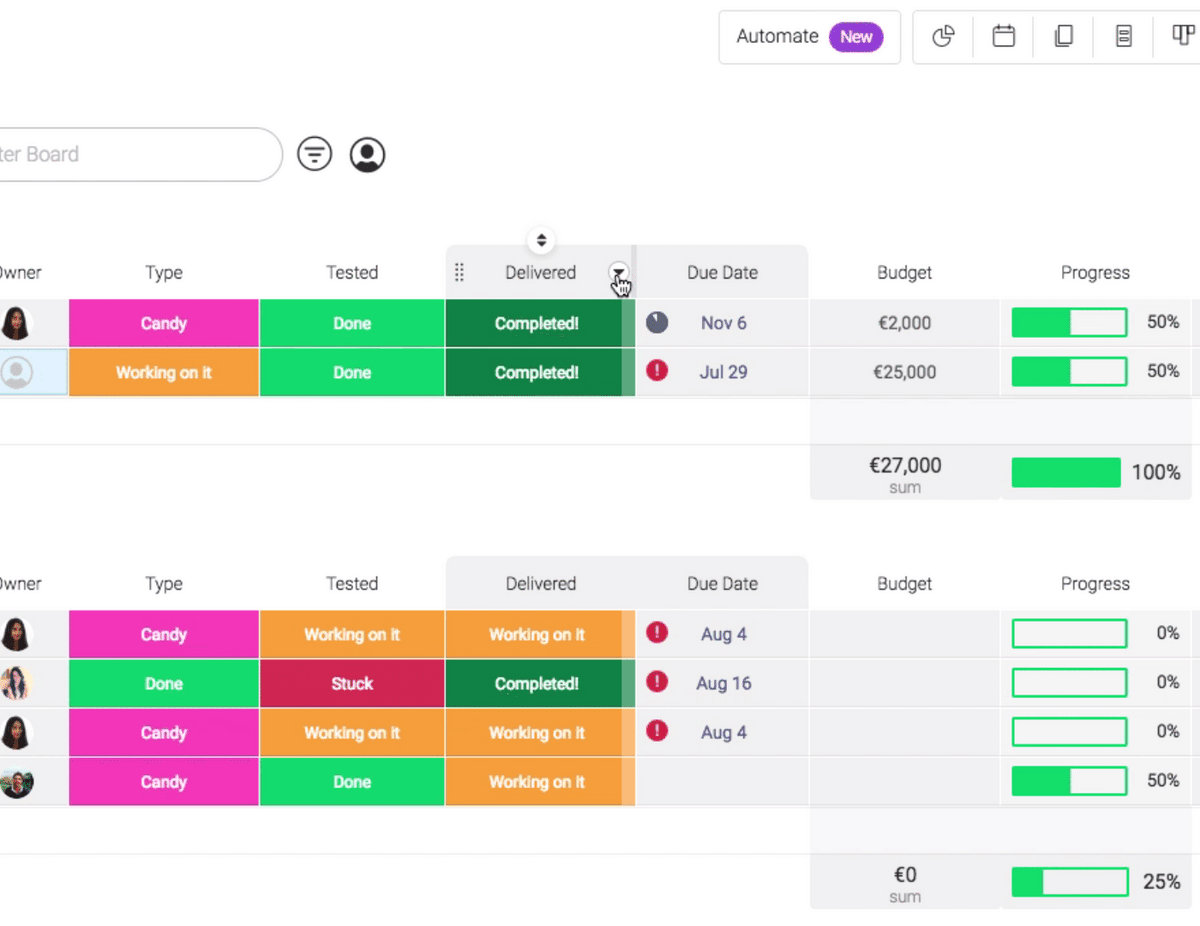
2. Create achievable goals and milestones
We’ve talked about the importance of setting clear goals and expectations. But these goals also need to be achievable.
Why?
Because working towards an unachievable goal is pretty demoralizing.
Put yourself in your team’s shoes. They’re given a monthly sales target to reach, but it’s triple any target they’ve hit in the past. Sounds unrealistic, right?
When you know you won’t reach the goal, motivation can start to fall. And when employees aren’t motivated, their productivity takes a hit.
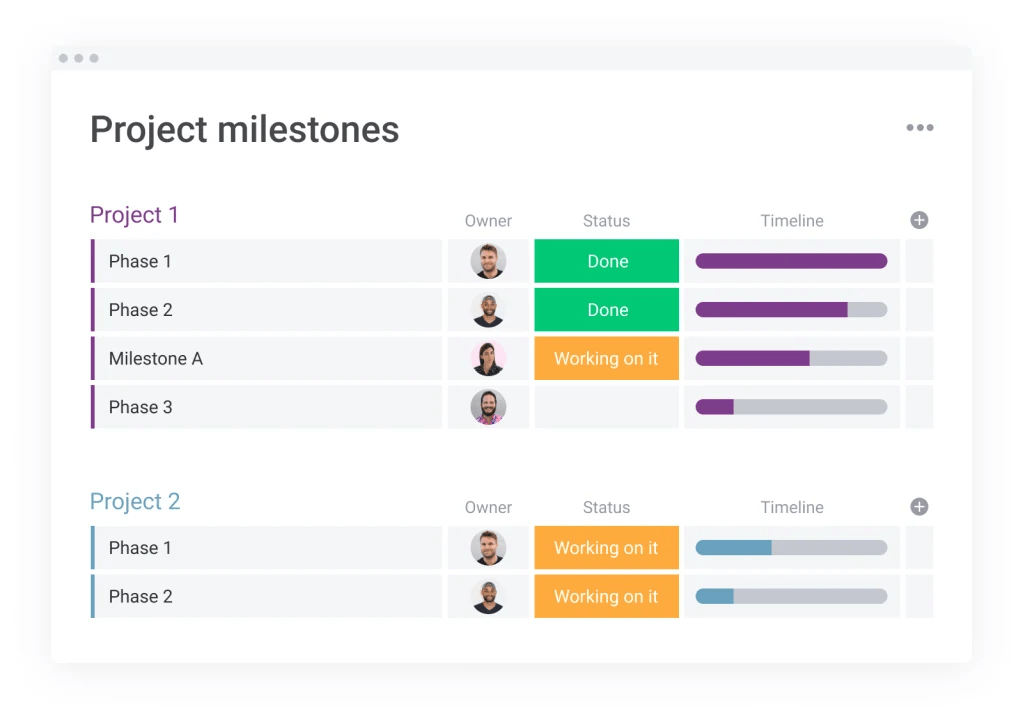
So how can you make sure all of your goals and milestones are realistic?
Well, using SMART goals is a good place to start.
With the SMART framework, you can create goals that are well-defined, trackable, and realistic. This gives your team achievable goals to work towards without feeling overwhelmed and unmotivated.
3. Reward accomplishments
How many times have you held a door open for someone and felt irritated when they didn’t say thank you? You’d have felt much better if they’d shown appreciation for your kind gesture, right?
Employee recognition works in the same way.
90% of employees say recognition motivates them to work harder. And when they’re working harder, they’re more likely to be productive.
So how can you provide recognition and rewards for your employees?
There are 2 ways you can go about it. And to be honest, we’d recommend using both of these options simultaneously:
- Formalize a way to recognize employees for their contributions. Whether that’s creating a bonus scheme or offering specific rewards at certain milestones, get a plan in place to show your team that their hard work won’t go unnoticed.
- Provide ad-hoc praise and recognition. If you see an employee doing something worth congratulating, praise them. Something as simple as commenting on a completed task shows you’re aware of their hard work.
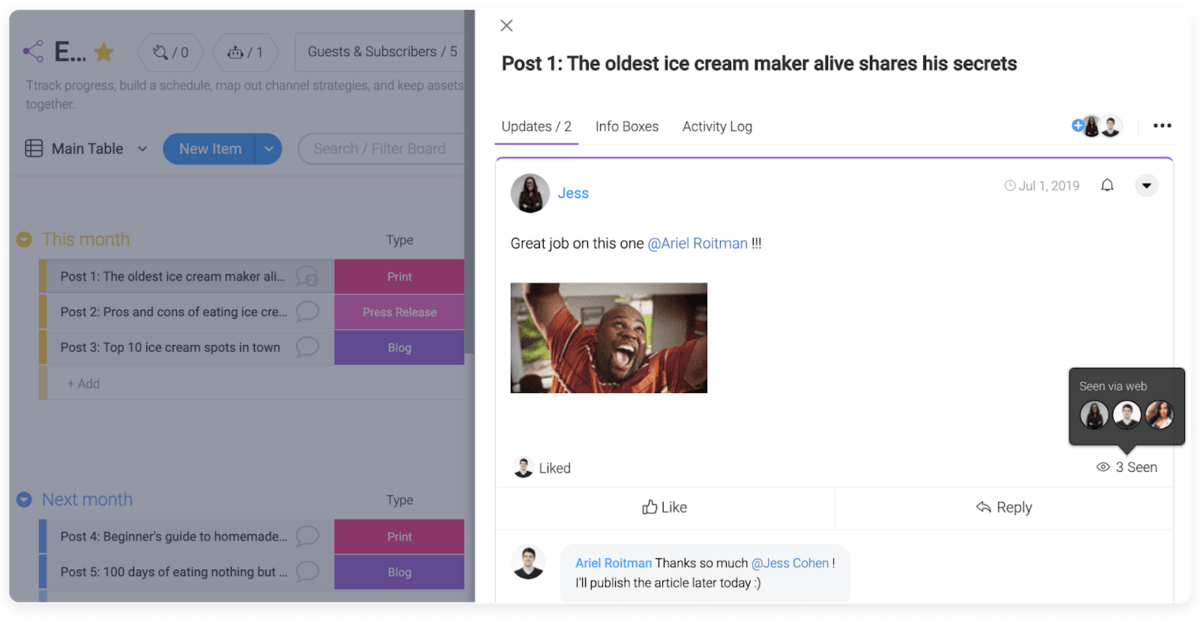
4. Provide access to the right tools
Using relevant and up-to-date tools allows your team to be more efficient. As a result, they can be more productive.
Let’s use an example to demonstrate what we mean.
Imagine you’re the owner of a digital marketing agency.
Part of your job involves conducting SEO audits, and you often use a variety of tools to analyze websites and produce reports.
But what if there was a platform out there that gave you all the information in one place?
It sounds much more efficient, wouldn’t you agree?
By using a single platform, you spend less time flicking between various tools and more time reviewing the websites.
And that’s how using the right tools can impact workplace productivity.
Although productivity and efficiency are different, there’s certainly a connection between the 2. So make sure your team is as efficient as possible by offering the right tools, and productivity will follow.5. Encourage downtime
Research shows that employees value their lunch break and that they feel more productive having had a proper break.
But the same research also shows that taking adequate lunch breaks is still not a top priority for the average worker.
Although regular breaks impact productivity, employees still aren’t taking all the downtime they need.
So how can you encourage downtime?
We know it can be difficult for employees to switch off during working hours, especially if they’re remote workers. So we’d suggest using time blocking to schedule downtime.
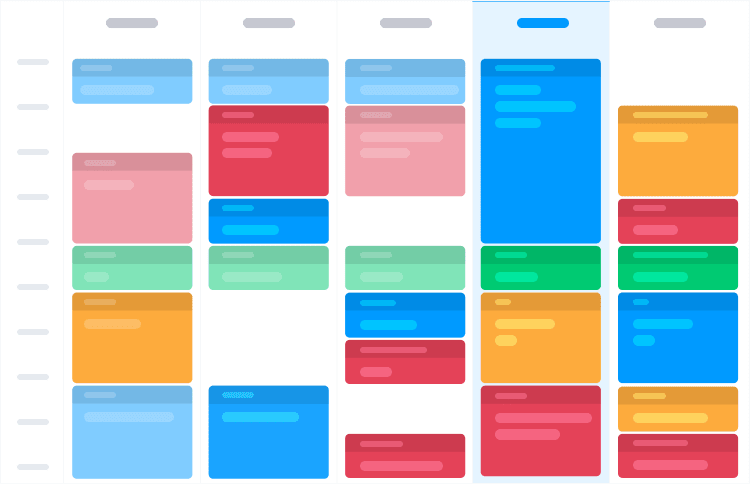
They can schedule short breaks throughout the day, a proper lunch break, and a clear end to the day so they can log off when the working day is done.
By having these breaks scheduled throughout the day, workers don’t need to feel pressured to keep working. As a result, they’re more likely to be productive during the hours they work. It’s a win-win for everyone involved.
6. Help employees prioritize their workload
Productivity is a measure of how much employees can complete in a certain amount of time. So it makes sense that efficient time management can result in higher productivity.
But we know that prioritizing their workload and managing their time efficiently isn’t always easy for employees.
There are conflicting deadlines, various projects happening at the same time, and unexpected changes that all impact how your team manages their time.
So how can you help employees prioritize their workload and manage their time better?
Using work management software is a good way to go.
With the right platform, employees can easily manage their time efficiently and even structure their workload in order of priority.
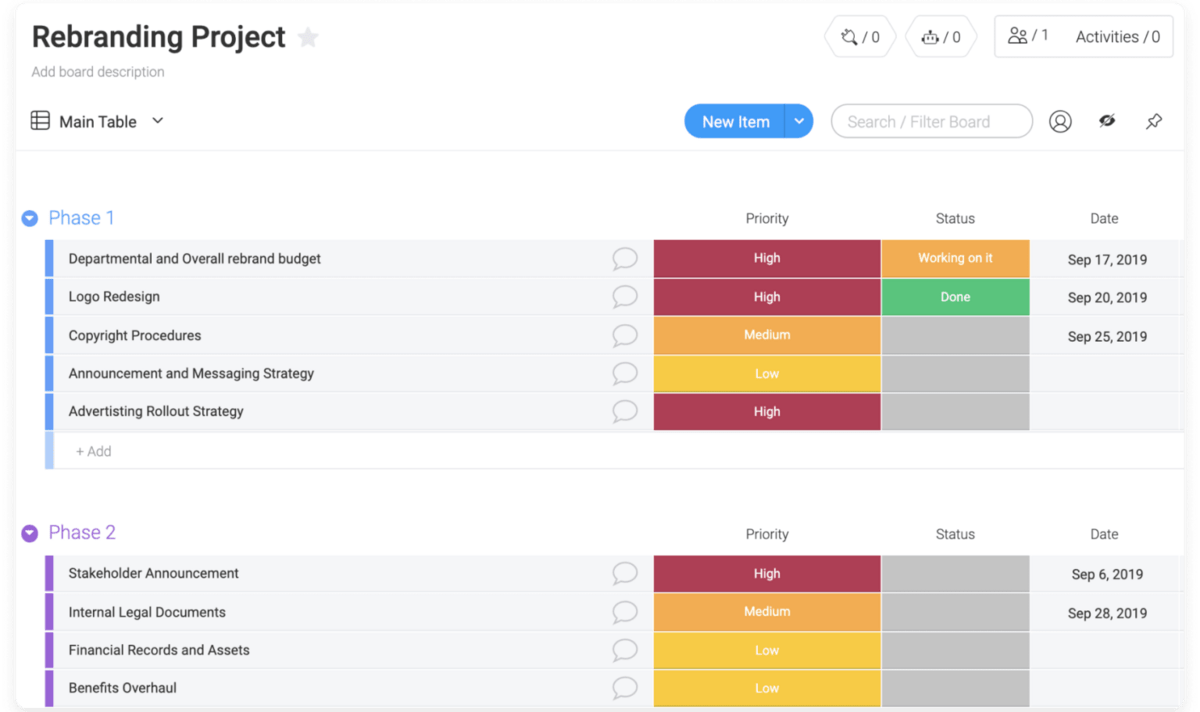
And with an intuitive platform like monday.com, it’s quick and easy to shift priorities around if needed. Because let’s be honest, it’s not very often everything goes to plan 100% of the time.
How monday.com can help you improve productivity
monday.com allows teams to manage everything in one workspace.
That’s right. Everything.
You can visualize your entire workload, collaborate with your team, and customize projects to your heart’s content.
Now you might be wondering how monday.com helps teams improve their overall productivity.
The answer? In more ways than one.
Let’s take a look at some of our features in more detail to show you just how much monday.com can help you boost productivity.
1. Automate your processes
Automations are a great way to streamline your processes, allowing you to spend less time doing repetitive tasks and more time being productive.
That’s why with monday.com, our users can easily automate their workflow.
Whether that’s using one of our pre-made automations or creating your own from scratch, we help you create a streamlined workflow. As a result, your team can focus on what matters: being productive.
2. Collaborate with your team
Collaboration isn’t a straightforward process, especially if your team has remote workers.
But being able to collaborate effectively plays an important role in productivity, allowing teams to work together as efficiently as possible.
Fortunately, monday.com has a variety of features and functions that allow teams to communicate and collaborate directly on our platform.
Ranging from sharing files to sending team-wide updates, monday.com is designed for teams to work together.
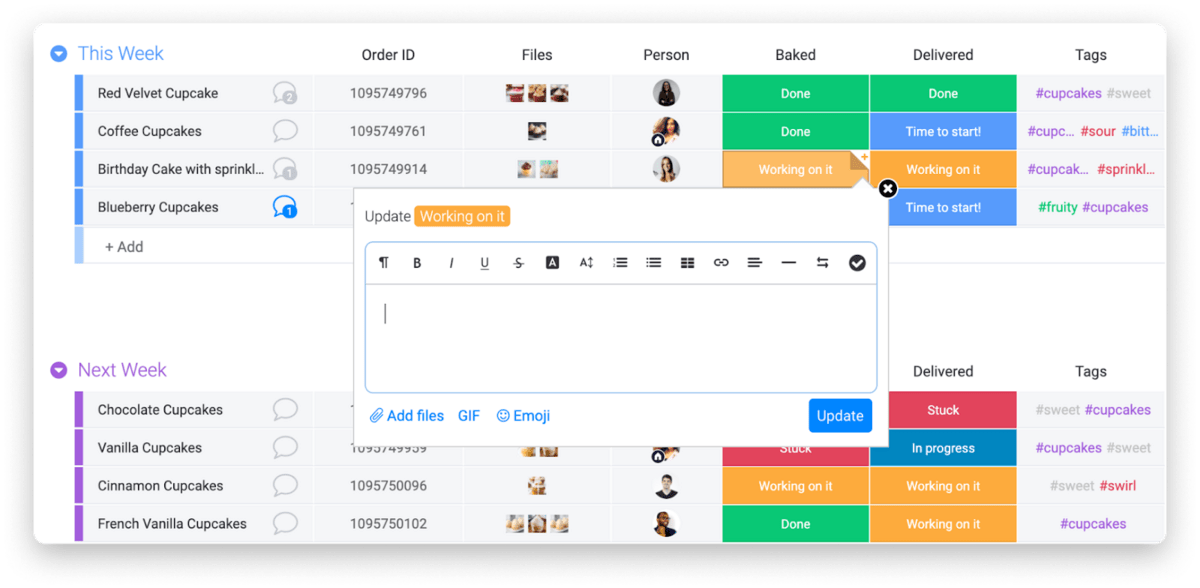
3. Add productivity measures
You need a platform that allows you to track productivity.
After all, if you’re not checking your progress, how will you know how productive your team is?
It’s not enough to implement changes and hope for the best.
And that’s where monday.com can help.
With our platform, you can easily track workplace productivity and put productivity metrics in place.
Simply add your milestones or use our progress tracking column to see how things are going, and you can keep on top of progress in real-time.
As a result, you can make sure your team is working as productively as possible. And if they’re not, you can use monday.com to find out why.
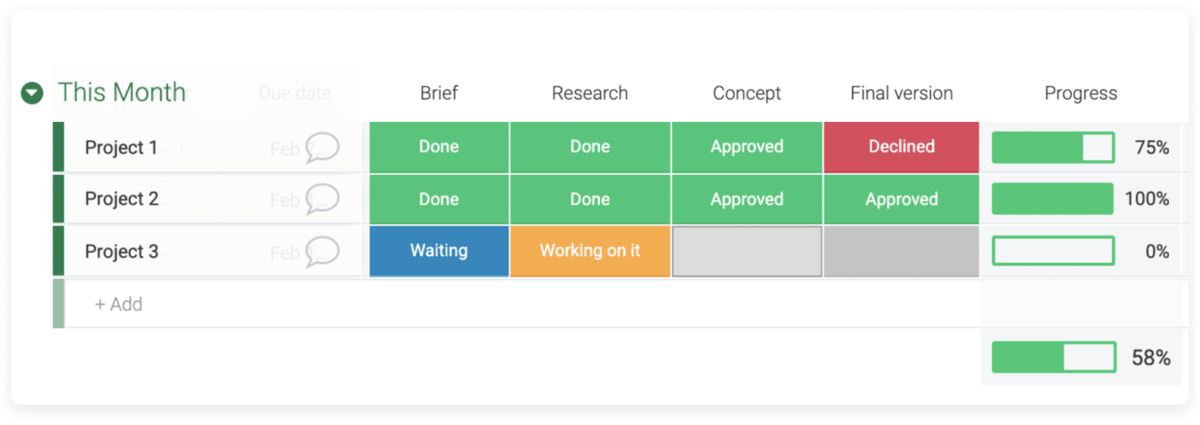
Give monday.com a try
By now, you’ve got a pretty good idea of how you can increase employee productivity. You know why it’s important, the obstacles you might face, and how to overcome them.
So what next?
It’s time to put this increased productivity knowledge into action.
And what better way to do that than with monday.com?
All you have to do is sign up, onboard your team — which is super easy — and get things moving.
Our work calendar template is a good place to start, just in case you were wondering.
